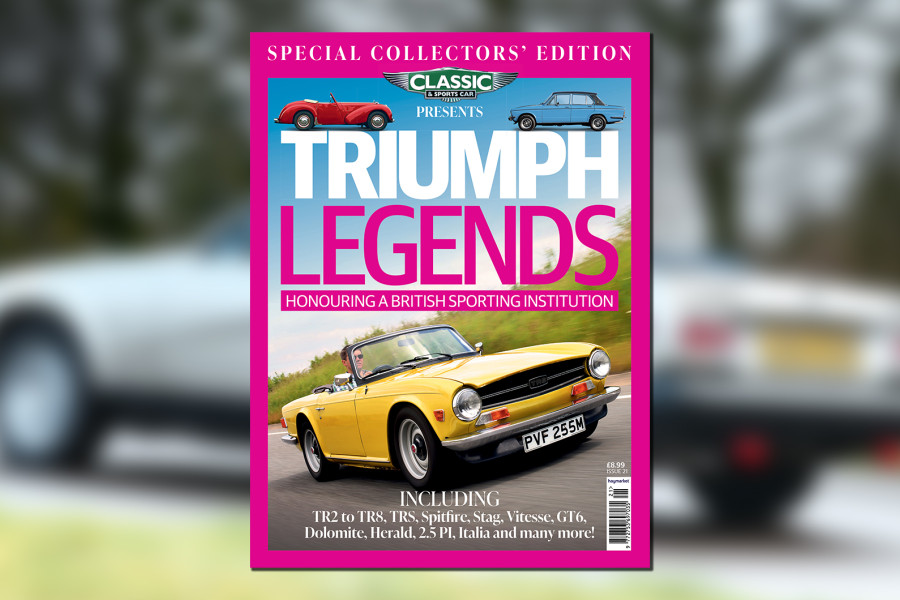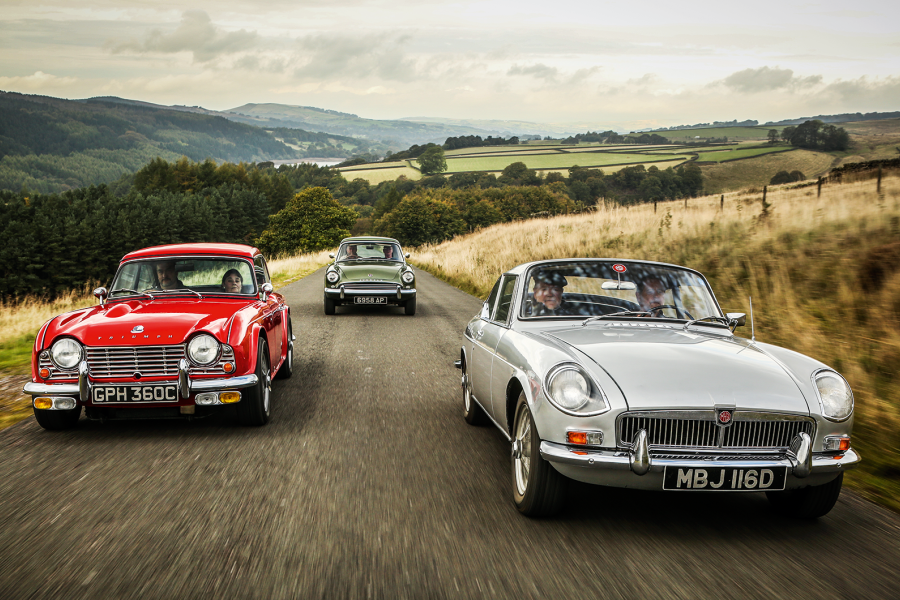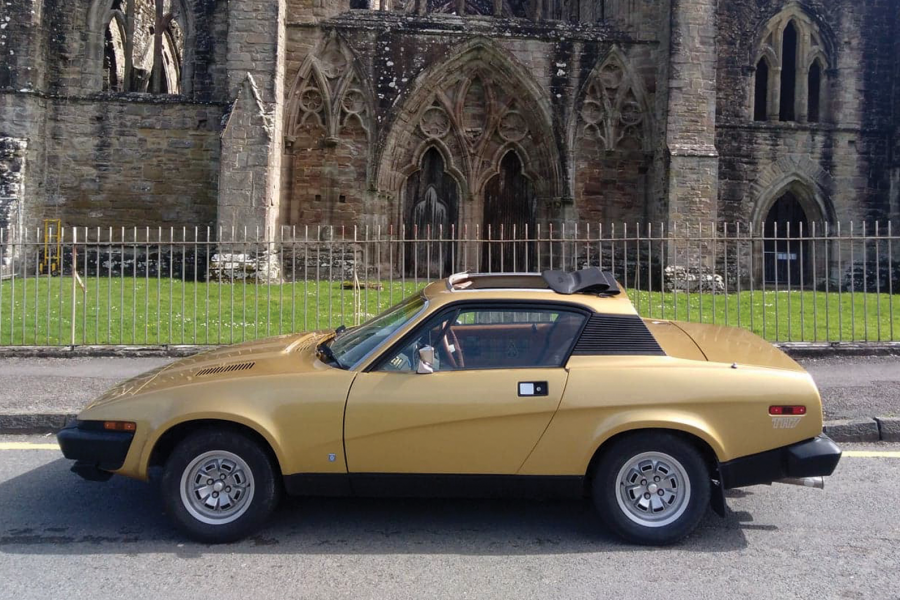Throw in a touch of sunshine and, as generations of enthusiasts have discovered, it won’t matter if you’re motoring enthusiastically in the Alps or simply on your daily commute, you will still have a smile on your face.
That is what this little Triumph is all about, and it is the reason why, for the following 18 years, hundreds of thousands of other Spitfires followed FC/1 off the production line.
Images: James Mann
Thanks to: Virginie and Ralf Huber
This was first in our August 2012 magazine; all information was correct at the date of original publication
Triumph Spitfires at Le Mans
In late 1963, it was decided that the Spitfire could be developed into a realistic contender for class honours at Le Mans.
Four racers were produced – with registration numbers running from ADU 1B to 4B – and entering them as prototypes meant that Triumph could deviate considerably from the standard road car.
The streamlined bodywork was therefore constructed from aluminium, and a glassfibre hardtop was grafted on.
The chassis was lightened, and the 1147cc engine received twin Weber carburettors, a gas-flowed eight-port cylinder head and a hot camshaft. The result was 102bhp.
On the team’s first outing at Le Mans in 1964, ADU 2B finished third in its class, driven by David Hobbs and Rob Slotemaker – and achieved the bonus of appearing on the cover of that week’s Autosport.
By the following year, Triumph had further developed the Spitfires, shaving 110lb off their weight and slightly increasing horsepower.
This time, all four cars started. ADU 3B and 4B scored a one-two in the up-to-1150cc GT class, finishing an impressive 13th and 14th overall.
With its objective achieved, Triumph called time on the Spitfire’s circuit-racing activities, preferring instead to concentrate on rallying.
Factfile
Triumph Spitfire Mk1
- Sold/number built 1962-’64/45,753
- Construction steel chassis, steel body
- Engine all-iron, pushrod 1147cc ‘four’, twin 1¼in SU carburettors
- Max power 63bhp @ 5750rpm
- Max torque 67lb ft @ 3500rpm
- Transmission four-speed manual, RWD
- Suspension independent, at front by double wishbones, coil springs, anti-roll bar rear transverse leaf spring, fixed-length driveshafts, radius arms; telescopics f/r
- Steering rack and pinion
- Brakes discs/drums
- Length 12ft 1in (3680mm)
- Width 4ft 9in (1450mm)
- Height 3ft 11½in (1205mm)
- Wheelbase 6ft 11in (2108mm)
- Weight 1568lb (711kg)
- 0-60mph 15.5 secs
- Top speed 92mph
- Price new £730
Enjoy more of the world’s best classic car content every month when you subscribe to C&SC – get our latest deals here
READ MORE
Austin-Healey Sprite and MG Midget: affordable fun
Triumph GT6: Canley’s super six
Triumph Spitfire vs MGB vs Lotus Elan: a new dawn
James Page
James Page is a regular contributor to – and former Editor of – Classic & Sports Car


















